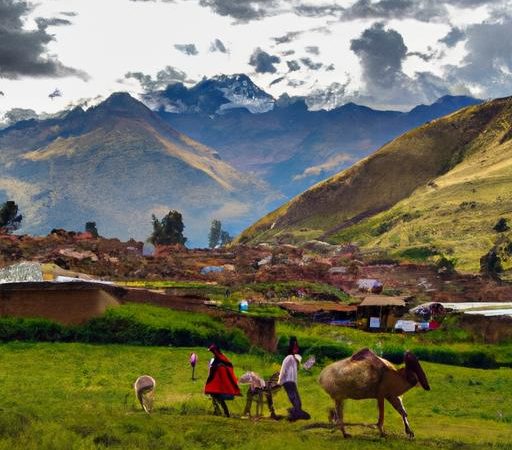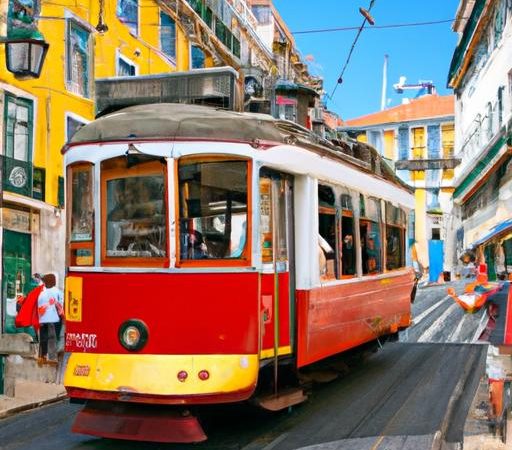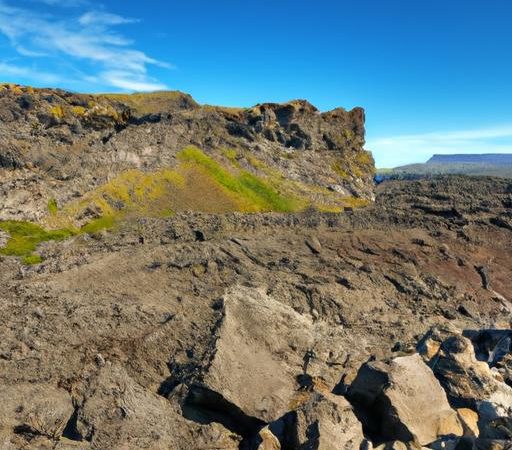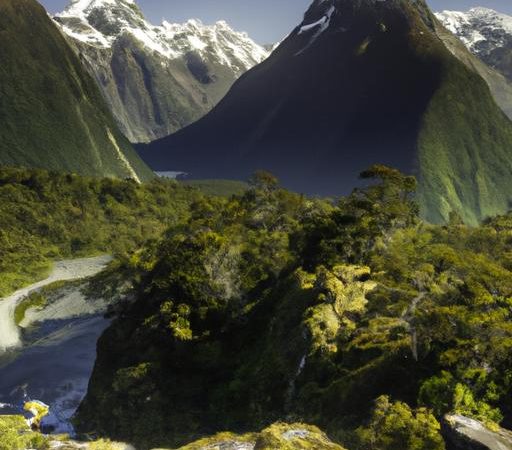Following the Pilgrims’ Footsteps: Reflective Moments on Spain’s Camino de Santiago
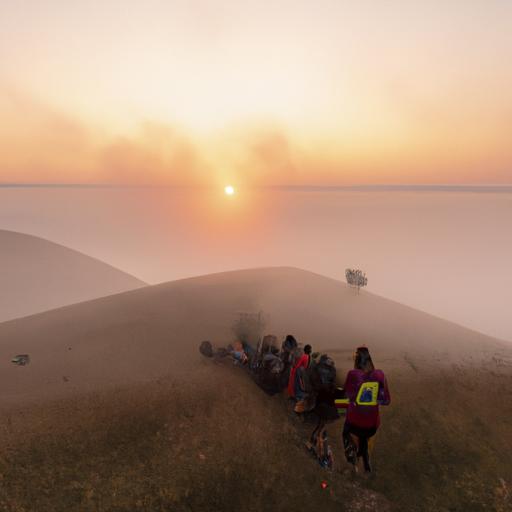

### Following the Pilgrims’ Footsteps: Reflective Moments on Spain’s Camino de Santiago
Embarking on the Camino de Santiago, a centuries-old pilgrimage route in Spain, is a transformative experience that allows travelers to immerse themselves in history, culture, and self-discovery. Walking in the footsteps of pilgrims who have traversed the Camino for over a millennium, one can’t help but feel a sense of awe and wonder at the spiritual significance of this journey.
The History and Significance of the Camino de Santiago
The Camino de Santiago, also known as the Way of St. James, is a network of pilgrimage routes that lead to the shrine of the apostle St. James the Great in the Cathedral of Santiago de Compostela in Galicia, Spain. It has been an important pilgrimage site for Christians since the Middle Ages, and today, it attracts thousands of pilgrims from all over the world seeking spiritual growth, physical challenge, and cultural immersion.
Walking the Camino: The Journey of a Lifetime
Walking the Camino de Santiago is not just about reaching the final destination of Santiago de Compostela; it’s about the journey itself – the people you meet, the landscapes you traverse, and the challenges you overcome along the way. Here are some key highlights of walking the Camino:
Benefits of walking the Camino de Santiago:
- Physical and mental well-being: Walking long distances every day can improve your physical fitness and mental clarity.
- Cultural immersion: The Camino de Santiago passes through picturesque villages, historic towns, and stunning landscapes, allowing you to immerse yourself in Spanish culture and history.
- Spiritual growth: Many pilgrims find the Camino to be a deeply spiritual experience, providing moments of introspection and connection with something greater than themselves.
Practical tips for walking the Camino de Santiago:
- Start slowly and build up your walking distance gradually.
- Pack light – only bring the essentials.
- Wear comfortable and sturdy walking shoes.
- Stay hydrated and eat well to keep your energy levels up.
Reflective Moments on the Camino: A Personal Journey
Walking the Camino de Santiago is a deeply personal experience that can lead to moments of reflection, insight, and self-discovery. Here are some ways in which the Camino can offer these reflective moments:
- Solitude and silence: Walking alone in nature allows you to disconnect from the hustle and bustle of everyday life and tune into your inner thoughts.
- Meeting fellow pilgrims: Interacting with other pilgrims from different backgrounds and cultures can broaden your perspective and teach you valuable lessons about empathy and friendship.
- Visiting historical sites: The Camino de Santiago is dotted with ancient churches, monasteries, and other historical landmarks that can inspire awe and contemplation.
Conclusion
The Camino de Santiago is not just a physical journey; it’s a spiritual and cultural odyssey that can transform your life in profound ways. By following in the pilgrims’ footsteps, you can experience moments of reflection, growth, and connection that will stay with you long after you’ve reached Santiago de Compostela. So lace up your walking shoes, pack your backpack, and embark on this pilgrimage of a lifetime – the Camino de Santiago awaits!
Remember, the Camino is not just about reaching the end, but about the journey itself. Enjoy every step along the way and embrace the reflective moments that come your way. Buen Camino!
Are you looking for a way to challenge yourself physically and spiritually? Look no further than Spain’s famous Camino de Santiago. This ancient pilgrimage route has been walked by millions of people throughout history, and continues to draw in modern-day travelers from all around the world. Walking in the footsteps of the pilgrims before you can be a transformative and reflective journey, full of beautiful scenery, unique cultural experiences, and opportunities for self-discovery. Let’s dive deeper into the history and significance of the Camino de Santiago, as well as tips for those planning to embark on this unforgettable journey.
History of the Camino de Santiago
The Camino de Santiago, also known as the Way of St. James, is a network of pilgrim routes leading to the shrine of the apostle St. James the Great in Santiago de Compostela, Galicia in Northwestern Spain. The remains of St. James were believed to have been buried in Santiago de Compostela, and over time, the site became a popular pilgrimage destination for Christians. It became one of the three major Christian pilgrimages, along with those to Jerusalem and Rome.
The earliest recorded pilgrimages to Santiago de Compostela date back to the 9th century, and the popularity of the Camino continued to grow throughout the Middle Ages. However, due to political conflicts and the Reformation in the 16th century, the popularity of the pilgrimage declined. It wasn’t until the late 20th century that the Camino saw a revival in interest and popularity, thanks in part to the efforts of the Spanish government to promote it as a tourist attraction and UNESCO’s designation of the route as a World Heritage Site in 1993.
Today, the Camino de Santiago attracts thousands of pilgrims every year, and it has become a symbol of personal and spiritual transformation for many.
Routes and Variations
While there are over 40 recognized routes to Santiago de Compostela, here are some of the most popular and well-known routes you can take:
1. The French Way (Camino Francés): This is the most popular and traditional route, starting in Saint-Jean-Pied-de-Port, France and spanning 800km to reach Santiago de Compostela.
2. The Portuguese Way (Camino Portugués): The second most popular route starts in Lisbon, Portugal or Porto, Portugal, and crosses into Spain, traveling along the coast and through historic cities such as Porto and Pontevedra.
3. The Northern Way (Camino del Norte): This scenic route starts in the Basque region of San Sebastián, Spain and follows the northern coastline until reaching Santiago de Compostela.
4. The English Way (Camino Inglés): This shorter route starts in either Ferrol or A Coruña and was historically used by pilgrims arriving by ship from Northern Europe.
No matter which route you choose, you will encounter breathtaking landscapes, charming medieval towns, and welcoming locals along the way.
Experience the Journey
The pilgrimage to Santiago de Compostela is not just about reaching the final destination, it’s about the journey itself. With that in mind, here are some tips and practical advice to make your experience on the Camino de Santiago as enriching and meaningful as possible:
1. Physical Preparation: The Camino de Santiago can be a physically demanding journey, so it’s important to train and prepare your body beforehand. Start with shorter walks and gradually increase the distance as you build your endurance. Don’t forget to stretch and take breaks to avoid injury.
2. Necessary Gear: Invest in a good pair of hiking shoes that are comfortable and supportive. A backpack, rain gear, and a water bottle are also essential. Packing light is key, as you will have to carry everything you need with you.
3. Accommodation Options: There are various accommodation options along the Camino de Santiago, including albergues (hostels), hotels, and guesthouses. For a more affordable and communal experience, try staying at an albergue, but be aware that facilities may be basic and you will have to share a room with other pilgrims.
4. Meeting Other Pilgrims: The Camino de Santiago is a popular route for many travelers, allowing you to meet people from all over the world. Take advantage of this opportunity to connect with others and share stories and experiences along the way.
5. Embrace the Experience: The Camino de Santiago is a journey of self-discovery, so it’s important to stay present and open to new experiences. Take time to reflect, meditate, or journal along the way. Try to disconnect from your phone and social media, and enjoy the beauty and peacefulness of the surroundings.
Benefits and Practical Tips
The Camino de Santiago offers a multitude of benefits, both physical and spiritual. Walking for days or weeks at a time can improve your physical health, while the reflective and meditative quality of the journey can lead to a sense of inner peace and clarity. Here are some practical tips to make the most out of your Camino experience:
1. Follow the Yellow Arrows: The route is marked with yellow arrows, which indicate the right direction – they will be your guide throughout the journey.
2. Plan Your Trip: Decide on which route you want to take, how long you want to walk each day, and where you want to stay the night. Be flexible and adjust your plans according to your personal needs and physical condition.
3. Respect the Culture and Environment: The Camino de Santiago passes through many small towns, so it’s important to be respectful of the local culture and customs. Take your trash with you, don’t damage any historical monuments, and be mindful of your impact on the environment.
4. Stay Safe: Always carry a form of identification with you, as well as emergency contact information and any necessary medication. For safety reasons, it’s also recommended to have a whistle and a headlamp handy.
Reflective Moments on the Camino
Walking the Camino de Santiago can be a deeply personal and transformative journey. Many who embark on this pilgrimage report experiencing a sense of personal growth and spiritual awakening. Here are some first-hand experiences of individuals who walked the Camino and were deeply moved by their experience:
“My Camino experience was life-changing. I met strangers who became friends, discovered beautiful landscapes and new cultures, and most importantly, I found a sense of inner peace and clarity that I had been searching for.” – Sarah, USA
“The Camino de Santiago gave me a sense of freedom and liberation. I was able to let go off the stresses and worries of my daily life, and truly immerse myself in the present moment.” – Michael, Canada
“I started the Camino as a skeptic, but I finished as a changed person. The journey taught me the power of resilience and the importance of human connection. I will forever be grateful for my experience on the Camino de Santiago.” – Christina, Australia
In conclusion, following the pilgrims’ footsteps on the Camino de Santiago is a challenging yet rewarding journey. Whether you are seeking spiritual enlightenment, physical transformation, or simply an adventure of a lifetime, the Camino de Santiago has something to offer for everyone. So, lace up your hiking shoes and embark on this transformative journey – you never know what reflective moments and life lessons you may encounter along the way. Buen camino!

